In an age where cyber threats are increasing every day, ethical hacking has become one of the most vital skills in cybersecurity. Ethical hackers, often known as “white-hat hackers,” play a crucial role in identifying and fixing vulnerabilities before malicious hackers exploit them. With the global rise in digital transformation, ethical hacking is not only a career but also a necessary defense mechanism for every modern organization. According to Statista, cybercrime is expected to cost the world over $10.5 trillion annually by 2025, highlighting the urgent need for ethical hackers worldwide.
This guide will explain what ethical hacking is, the common tools and techniques used, and the legal boundaries every ethical hacker must respect.
Table of Contents
What Is Ethical Hacking?
Ethical hacking is the authorized process of testing and assessing the security of systems, applications, or networks to find vulnerabilities before cybercriminals do. Unlike black-hat hackers who break into systems for personal gain, ethical hackers follow a legal and structured process with the goal of improving security.
Ethical hacking is also referred to as penetration testing or white-hat hacking. It helps organizations understand their security weaknesses and strengthen their cyber defenses. Certified ethical hackers often follow a code of ethics defined by international standards such as EC-Council’s CEH (Certified Ethical Hacker) program or CompTIA Security+.
Why Ethical Hacking Is Important
With cyberattacks targeting everything from hospitals to financial institutions, organizations cannot rely on traditional defenses alone. Ethical hackers simulate real-world attacks to test how well systems can withstand threats. These assessments help prevent data breaches, protect customer information, and ensure compliance with cybersecurity regulations like GDPR, ISO 27001, and NIST standards.
Moreover, ethical hacking creates a proactive security posture allowing organizations to detect and fix issues before they cause damage.
Common Ethical Hacking Techniques
Ethical hackers use a combination of manual and automated techniques to assess vulnerabilities. Here are the most common methods used:
- Reconnaissance (Information Gathering) – This is the first phase of ethical hacking, where the hacker collects data about the target using tools like Nmap and Maltego. The goal is to understand the target’s systems, IP addresses, and potential weak points.
- Scanning and Enumeration – Tools such as Nessus or OpenVAS are used to identify open ports, active devices, and potential vulnerabilities in the network.
- Gaining Access – Ethical hackers attempt to exploit vulnerabilities to enter systems using tools like Metasploit Framework. This helps assess the real-world impact of a discovered weakness.
- Maintaining Access – This step tests whether attackers can stay hidden within a system. Ethical hackers use controlled techniques to simulate persistence mechanisms while ensuring no real harm is done.
- Covering Tracks and Reporting – Finally, ethical hackers document every step taken, prepare a detailed report, and share recommendations for patching the vulnerabilities. Transparency is crucial in this phase.
Essential Tools for Ethical Hacking
Ethical hackers rely on powerful cybersecurity tools to perform penetration testing efficiently. Some of the most popular ones include:
- Kali Linux – The go-to operating system for ethical hackers, preloaded with hundreds of security testing tools. (Kali Linux Official Site)
- Burp Suite – Used for web vulnerability scanning and intercepting network traffic. (Burp Suite)
- Wireshark – A packet analyzer tool that helps capture and analyze network traffic. (Wireshark)
- Hydra – A brute-force tool used for password testing across various protocols.
- Aircrack-ng – Used for wireless network penetration testing and analyzing Wi-Fi security.
- John the Ripper – A fast password cracking tool that tests the strength of stored passwords.
These tools are legal to use only in authorized environments. Running them on networks or systems without consent is considered a cybercrime in most countries.
Legal and Ethical Guidelines
While ethical hacking is valuable, it must always operate within strict legal boundaries. Unauthorized access to systems, even for “testing,” can lead to severe legal penalties. Ethical hackers must:
- Obtain written permission before testing any system.
- Follow a defined scope only test the systems and areas approved by the organization.
- Avoid data destruction or unauthorized data access.
- Maintain confidentiality and report findings responsibly.
Laws like the Computer Fraud and Abuse Act (CFAA) in the U.S. and the Computer Misuse Act (CMA) in the U.K. criminalize unauthorized hacking, even if no harm is intended. Ethical hackers should also follow standards set by organizations like EC-Council and ISC².
Becoming a Certified Ethical Hacker
If you’re interested in pursuing a career in ethical hacking, certifications play a major role. The most respected ones include:
- CEH (Certified Ethical Hacker) by EC-Council
- OSCP (Offensive Security Certified Professional) by Offensive Security
- CompTIA PenTest+
- GIAC Penetration Tester (GPEN)
These certifications validate your skills and ensure that you understand both the technical and ethical aspects of cybersecurity.
Final Thoughts
Ethical hacking is more than just “legal hacking” it’s a crucial practice that keeps the digital world safe. By identifying and fixing vulnerabilities before attackers can exploit them, ethical hackers serve as the digital guardians of our modern age.
However, with great power comes great responsibility. Every ethical hacker must act within legal and moral boundaries to protect both data and reputation. As cyber threats continue to evolve, the demand for skilled ethical hackers will only grow. Whether you’re a cybersecurity student or an IT professional, learning ethical hacking is one of the smartest investments you can make in your digital career.
For more information on ethical hacking certifications and learning resources, visit the EC-Council Training Portal.
Also Check Top 10 Cybersecurity Best Practices for Small Businesses


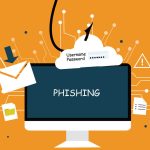
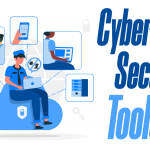
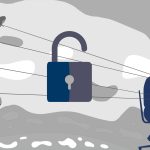
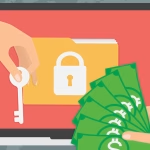




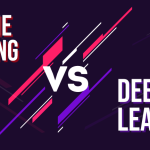
1 thought on “Introduction to Ethical Hacking: Tools, and Techniques 2025”